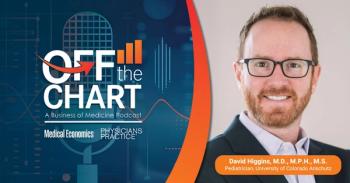
Physician groups welcome transparency prompted by Sunshine Act, but concerns remain
The comprehensive, nationwide effort that the Physician Payment Sunshine Act represents is desperately needed, says Steven Nissen, MD, of the Cleveland Clinic. Others, however, have concerns about privacy, accuracy in reporting, and patients' ability to understand reported information.
The comprehensive, nationwide effort that the
"Secrecy in a democracy is never a good thing,” says the chairman of the Robert and Suzanne Tomsich Department of Cardiovascular Medicine at the institution. “In a democracy, transparency is the best policy.”
The Sunshine Act, he adds, is about fairness to patients as well. “If I prescribe an expensive, branded drug to treat your cholesterol, you should know whether or not I have a financial relationship with the company that makes that drug.”
Nissen was one of five prominent physicians who sent a
The voices of these physicians joined a chorus of other organizations representing doctors, including the American Medical Association and National Physicians Alliance, calling for release of the final rule, although the proposed act also prompted opposition from those who thought the requirements unnecessary or who were concerned about the burdens of reporting, government involvement, or a possible chilling effect on productive collaborations. Even some groups supporting the overall goal of the act expressed misgivings-for instance, about whether physicians would be adequately protected if disputes occurred. Some corporations tired of waiting to put into effect their advance compliance efforts.
Reaction to final rule
The
The Sunshine Act is “very reasonable,” he says. “It doesn’t say that physicians can’t have relationships; it simply says that they should be a matter of public disclosure.”
The
CMS also agreed with some but not all of the
Effect on doctors, patients
CMS expects 224,425 physicians and 1,100 teaching hospitals to be affected in the first year of the program and 168,319 physicians and 1,100 teaching hospitals to be affected in subsequent years.
Physicians acting ethically should have nothing to fear, Nissen says, and doctors who do not want their names appearing in the database can refuse funding from drug and device manufacturer. But “anybody who says [physicians are] not influenced is simply not being realistic. Studies have shown over and over and over again that physicians are influenced,” he says. (See
When
But Nissen scoffs at the notion that patients may have difficulty interpreting the reported information.
“Patients are much more educated than they’ve ever been before,” he says. “Most of the patients who come to see me have looked me up on the Web. They know my history. They’ve looked at my Wikipedia page about me. They’ve looked at Web sites...that have patients who grade physicians.”
In such instances, Nissen says, consumers are applying in the healthcare arena the techniques they use when making other important decisions.
“Before I go out and buy a major appliance, I check Consumer Reports, and I see this as no different,” he says “Before you see a physician, you may want to know whether that physician has relationships that you think might influence their care of you. It’s a basic right for patients to have that information.”
CMS expects about 1,150 manufacturers and 420 group purchasing organizations to be required to submit information. They face penalties for noncompliance ranging from $1,000 to $100,000 for each payment reported, with a maximum of $1 million per annual filing.
The
As the rule contains no reporting requirements or noncompliance penalties for physicians, however, the main issue facing doctors, in addition to ensuring that patients understand reported information, is to ensure that the information released is accurate to begin with. Nissen says the affected drug and device manufacturers with which he is familiar plan to share the information with potentially affected physicians before disclosing it to the government, so that any inaccurate information can be corrected before submission. (See the “
Other resources
Prior to the Sunshine Act’s finalization, members of the public had other resources to consult to learn whether physicians have received payments from drug or device manufacturers.
ProPublic’s Dollars for Doctors Web site (
And some individual institutions have publicly disclosed physician payments from drug and device makers for several years. The Cleveland Clinic announced its reporting policy in 2008.
“This has caused no problems,” Nissen says. “It hasn’t caused problems for patients, and it hasn’t caused problems for physicians.”
The database resulting from the Sunshine Act will be another tool available to help patients make informed decisions, Nissen says.
“I feel strongly about it. I believe, and have believed for many years, that patients have a right to know what monies their physicians are receiving from commercial entities,” he says.
Additional resources
Newsletter
Stay informed and empowered with Medical Economics enewsletter, delivering expert insights, financial strategies, practice management tips and technology trends — tailored for today’s physicians.








